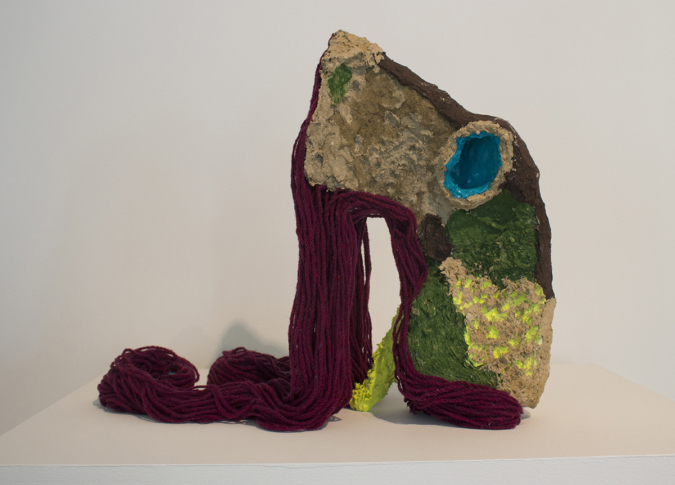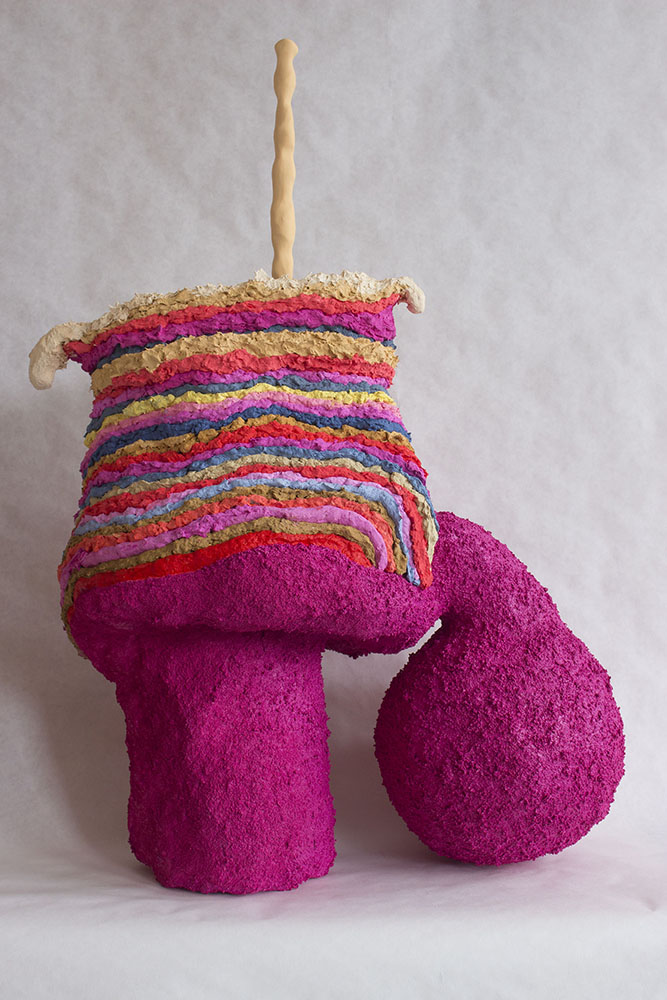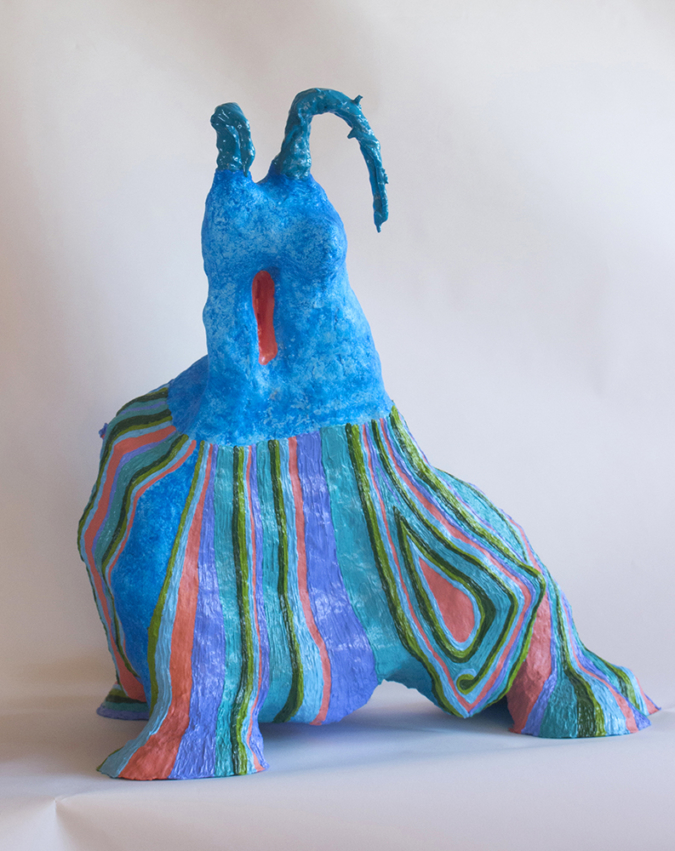Nadine Beauharnois
Nadine Beauharnois is a sculptor living and working in Philadelphia and is a member-owner of the artist run gallery AUTOMAT Collective. She presently works with a variety of materials to make sculptures that examine the nature of human experience as a combination of the awkward, painful, and humorous. Her sculptures are humble objects. They sag and bend. Some may appear to be injured or have parts missing. Bodily elements like nondescript appendages or eye or tongue-like shapes, tentatively reach or suggestively thrust, implying unsettled humor. The textures and colors in her sculptures are often in response to visual stimuli like richly patterned textiles or sea grass plastered to a cliffside. Nadine exhibits actively and is presently included in Painters Sculpting/Sculptors Painting at Fleisher/Ollman Gallery in Philadelphia and Informal Language at Collar Works in Troy, New York.
Question:
In all of your work you use paint as a colored covering but in the recent work (2017) paint also constructs patterns, repeats forms and follows contours in a physical, sculptural manner, seemingly replacing the role of yarn in your previous work. Can you tell us about this choice? One result of this change is that the sculpture is less noticeably assemblage. Is this a conscious development, an important transition?
Answer:
In part, my work is a love letter to paint’s tactility, and I’m also curious how different materials can achieve effects similar to thick paint placed or squeezed into patterns. I began using yarn and other non-paint elements in works like Cliff Dweller because yarn can be manipulated (draped, placed in repeating patterns, etc.) in ways that, to a degree, mimic paint. I also like the idea of responding to a material’s inherent color and texture, instead of considering color purely as a painted surface application. I’ve been thinking about how Eva Hesse used yarn and cord in her dimensional works on panel as she transitioned from painting to sculpture.

Cliff Dweller, 2016, wire, yarn, papier mâché/paper pulp, acrylic mediums and acrylic paint, 14″ x 20″ x 9″ inches
Recently, I began mixing acrylic paint into wet paper clay and sculpting directly with the colored pulp. There is a subtle but important difference between color as sculptural material and as surface application- though I don’t think these approaches are mutually exclusive. I like to juxtapose different textures and to avoid a surface “sameness”, so in certain areas of the same works in which I use the paper clay technique, I’ll also apply paint as a surface covering (as in Tic, Gag and Circus Escapee).
Somewhat paradoxically, my love of paint prompted me to switch from making 2-dimensional paintings to making sculpture. I still look at painting as often as I look at sculpture, and I derive ideas from artists like Hans Hoffman as much as Ron Nagle and Kathy Butterly. If the work calls for it, I still introduce yarn or fabric elements. I don’t think I’ll ever fully eschew the magic sensuousness of mixing and applying paint – by brush or by trowel.

Tic, gag (joke’s on me), 2017, wire, plaster, papier mâché/paper pulp, acrylic mediums and acrylic paint, 29″ x 19″ x 13″






